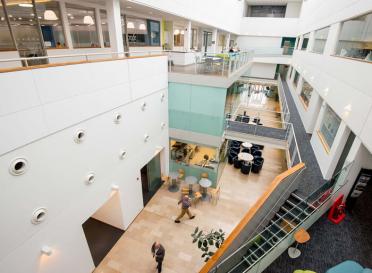
Life at Earlham Institute
We believe that our people are our greatest asset, and we want you to have the freedom to achieve your very best work here.
Are you interested in a career in bioinformatics, genomics, or machine learning? Do you want to contribute to cutting-edge research in plant science?
The Earlham Institute’s vibrant, interdisciplinary research team values diverse perspectives and collaboration and is working to unravel the complexities of RNA splicing in wheat.
Wheat has immense global importance and researchers are constantly engaged in identifying genetic variation to increase yield, resilience, disease resistance and reduce inputs. This project will explore how RNA splicing impacts the transcriptional landscape and drives phenotypic variation.
You will have the opportunity to apply state-of-the-art sequencing and computational approaches to address critical questions, including understanding how splicing variation influences gene expression and how splicing is conserved across species in the Triticeae family.
Collaborating with leading wheat breeders such as RAGT, KWS, and Limagrain, you’ll work on tools to predict alternative splicing using machine learning giving breeders help to pinpoint genetic variations linked to essential agricultural traits. Your research will have an immediate impact with potential real-world applications in agriculture.
By the end of the PhD, you’ll have highly sought-after skills in genomics, bioinformatics, and data-driven biology, opening up opportunities in both academia and industry.
This project is ideal for anyone eager to learn bioinformatics or a computer scientist looking to apply machine learning to genomics. Apply now to contribute to ground-breaking discoveries in plant biology.
Further reading:
Application information:

We believe that our people are our greatest asset, and we want you to have the freedom to achieve your very best work here.

Norwich is a city of culture, with its rich history of art and writing, as well as a city of science - hosting some of the leading centres for life science research in the world.

The behaviours and communication skills we expect from candidates.